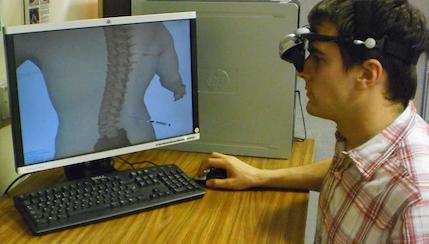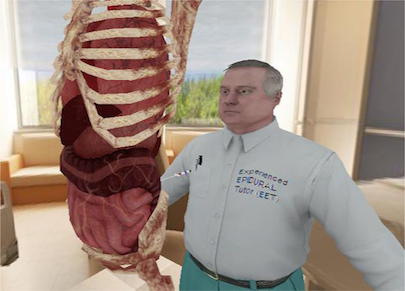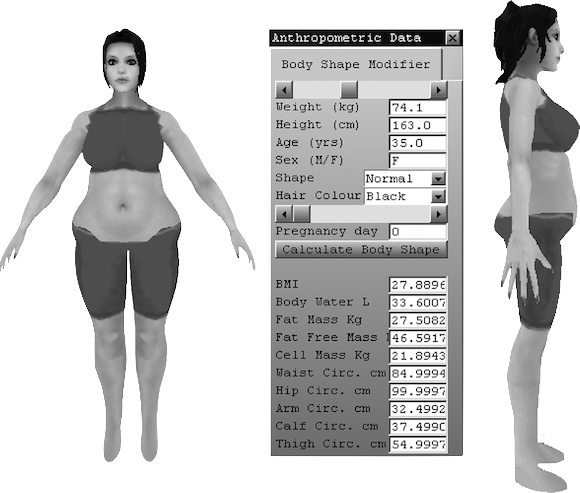A simulator for epidural needle insertion has been developed [1] - see Figure 1.

The complex skills involved with administering epidurals, such as locating optimal insertion point and needle angle, can only be learned by practice. However it can be dangerous for novice anaesthetists to practice their first epidural procedure on real patients. This simulator provides a training scenario whereby novice anaesthetists can practice needle insertions.

A novel aspects is that the virtual patients are of adjustable body mass index (BMI) based on measured patient data [2]. Also the device enables experienced epiduralists to fine tune their epidural technique for obese patients, providing a platform to help experts train novices.

The virtual spine model can bend and flex with three degrees of freedom (DOF) and adapt to match the particular size shape and BMI of individual patients. The eMagin stereoscopic head mounted display (HMD) was combined with the Novint Falcon haptic device and custom pressure measurment wireless microcontroller devices [3]. A clinical trial measured the force during needle insertions from various BMI obstetric patients and used this for simulated haptic feedback.
[1] Vaughan N, Dubey VN, Wee M, Isaacs R. “Advanced Epidural Simulator with 3D Flexible Spine and Haptic Interface.” ASME Journal of Medical Devices, Proceedings of DMD2012 Design of Medical Devices Conference, Minnesota. 2012. http://medicaldevices.asmedigitalcollection.asme.org/data/journals/jmdoa4/28022/med_06_01_017524.pdf
[2] Vaughan, N., Dubey, V. N., Wee, M. Y., & Isaacs, R. (2014). Parametric model of human body shape and ligaments for patient-specific epidural simulation. Artificial intelligence in medicine (AIIM) Journal (Impact 1.63 62(2), p129-140.) http://www.sciencedirect.com/science/article/pii/S0933365714001006
[3] Vaughan N, Dubey VN, Wee MYK, Isaacs R, (2014), “Device to accurately place Epidural Tuohy needle for Anesthesia Administration”, Mechanical Sciences Journa, Copernicus, Special Issue: Design of medical devices: creative solutions by young researchers, vol 5, pp. 1-6. http://www.mech-sci.net/5/1/2014/ms-5-1-2014.html